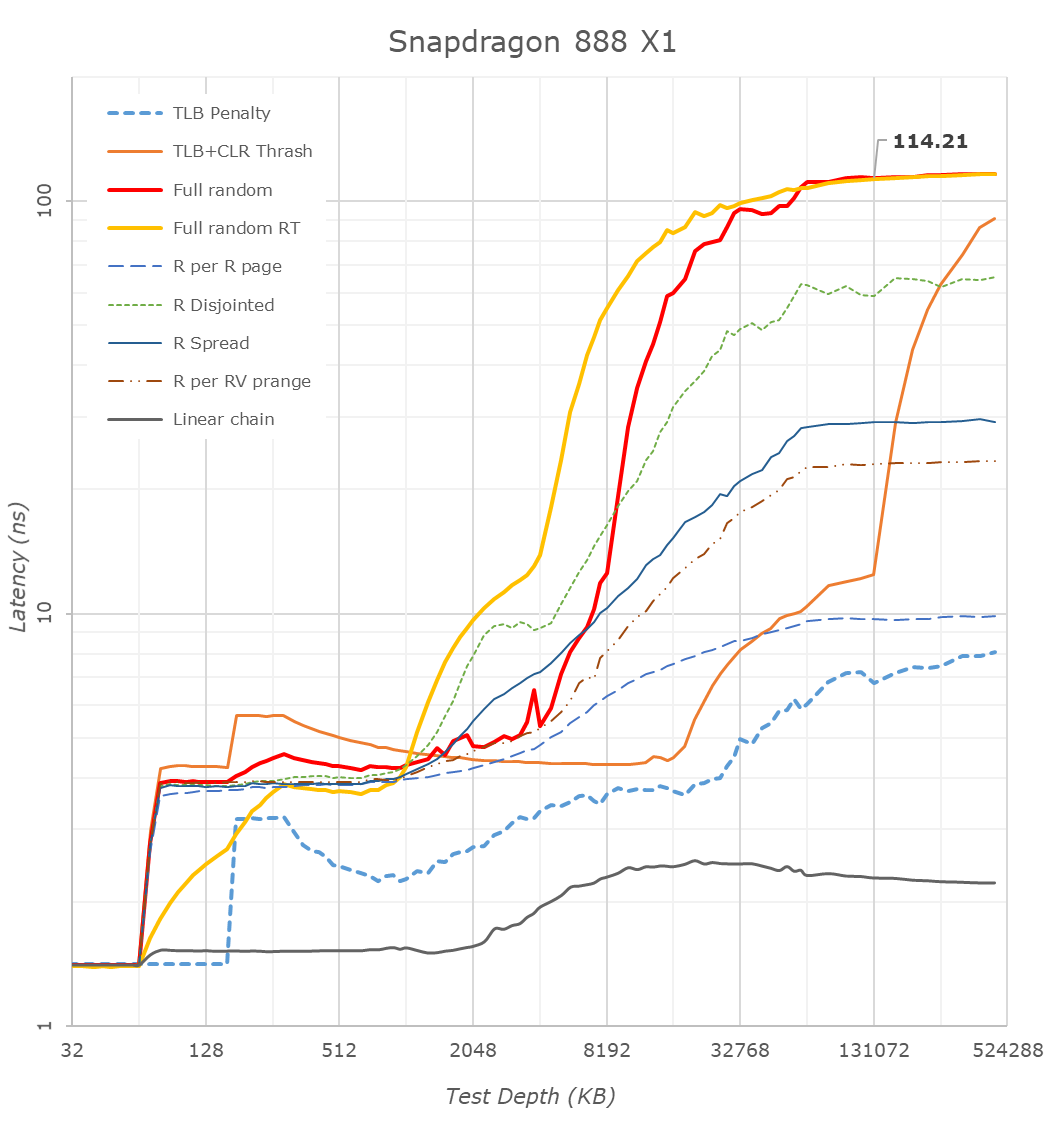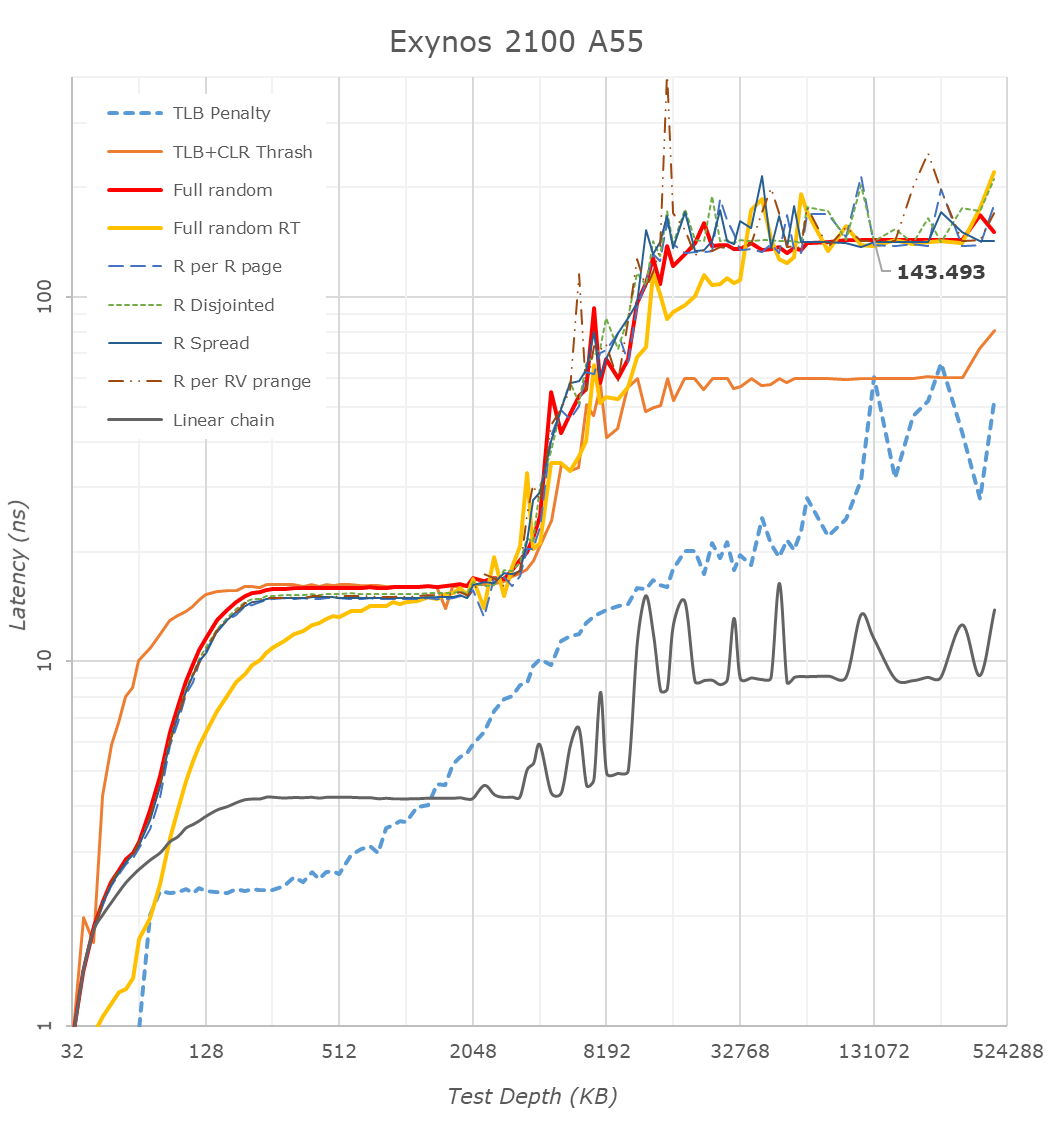The Snapdragon 888 vs The Exynos 2100: Cortex-X1 & 5nm - Who Does It Better?
by Andrei Frumusanu on February 8, 2021 3:00 AM EST- Posted in
- Mobile
- Samsung
- Qualcomm
- Smartphones
- SoCs
- Snapdragon 888
- Exynos 2100
Memory Subsystem & Latency: Quite Different
The memory subsystem comparisons for the Snapdragon 888 and Exynos 2100 are very interesting for a few couple of reasons. First of all – these new SoCs are the first to use new higher-frequency LPDDR5-6400 memory, which is 16% faster than that of last year’s LPDRR5-5500 DRAM used in flagship devices.
On the Snapdragon 888 side of things, Qualcomm this generation has said that they have made significant progress in improving memory latency – a point of contention that’s generally been a weak point of the previous few generations, although they always did keep improving things gen-on-gen.
On the Exynos 2100 side, Samsung’s abandonment of their custom cores also means that the SoC is now very different to the Exynos 990. The M5 used to have a fast-path connection between the cores and the memory controllers – exactly how Samsung reimplemented this in the Exynos 2100 will be interesting.
Starting things off with the new Snapdragon 888, we are seeing some very significant changes compared to the Snapdragon 865 last year. Full random memory latency went down from 138ns to 114ns, which is a massive generation gain given that Arm always quotes that 4ns of latency equals 1% of performance.
Samsung’s Exynos 2100 on the other hand doesn’t look as good: At around 136ns at 128MB test depth, this is quite worse than the Snapdragon 888, and actually a regression compared to the Exynos 990 at 131ns.
Looking closer at the cache hierarchies, we’re seeing 64KB of L1 caches for both X1 designs – as expected.
What’s really weird though is the memory patterns of the X1 and A78 cores as they transition from the L2 caches to the L3 caches. Usually, you’d expect a larger latency hump into the 10’s of nanoseconds, however on both the Cortex-X1 and Cortex-A78 on both the Snapdragon and Exynos we’re seeing L3 latencies between 4-6ns which is far faster than any previous generation L3 and DSU design we’ve seen from Arm.
After experimenting a bit with my patterns, the answer to this weird behaviour is quite amazing: Arm is prefetching all these patterns, including the “full random” memory access pattern. My tests here consist of pointer-chasing loops across a given depth of memory, with the pointer-loop being closed and always repeated. Arm seems to have a new temporal prefetcher that recognizes arbitrary memory patterns and will latch onto them and prefetch them in further iterations.
I re-added an alternative full random access pattern test (“Full random RT”) into the graph as alternative data-points. This variant instead of being pointer-chase based, will compute a random target address at runtime before accessing it, meaning it’ll be always a different access pattern on repeated loops of a given memory depth. The curves here aren’t as nice and they aren’t as tight as the pointer-chase variant because it currently doesn’t guarantee that it’ll visit every cache line at a given depth and it also doesn’t guarantee not revisiting a cache line within a test depth loop, which is why some of the latencies are lower than that of the “Full random” pattern – just ignore these parts.
This alternative patterns also more clearly reveals the 512KB versus 1MB L2 cache differences between the Exynos’ X1 core and the Snapdragon X1 core. Both chips have 4MB of L3, which is pretty straightforward to identify.
What’s odd about the Exynos is the linear access latencies. Unlike the Snapdragon whose latency grows at 4MB and remains relatively the same, the Exynos sees a second latency hump around the 10MB depth mark. It’s hard to see here in the other patterns, but it’s also actually present there.
This post-4MB L3 cache hierarchy is actually easier to identify from the perspective of the Cortex-A55 cores. We see a very different pattern between the Exynos 2100 and the Snapdragon 888 here, and again confirms that there’s lowered latencies up until around 10MB depth.
During the announcement of the Exynos 2100, Samsung had mentioned they had improved and included “better cache memory”, which in context of these results seems to be pointing out that they’ve now increased their system level cache from 2MB to 6MB. I’m not 100% sure if it’s 6 or 8MB, but 6 seems to be a safe bet for now.
In these A55 graphs, we also see that Samsung continues to use 64KB L2 caches, while Qualcomm makes use of 128KB implementations. Furthermore, it looks like the Exynos 2100 makes available to the A55 cores the full speed of the memory controllers, while the Snapdragon 888 puts a hard limit on them, and hence the very bad memory latency, similarly to how Apple does the same in their SoCs when just the small cores are active.
Qualcomm seems to have completely removed access of the CPU cluster to the SoC’s system cache, as even the Cortex-A55 cores don’t look to have access to it. This might explain why the CPU memory latency this generation has been greatly improved – as after all, memory traffic had to do one whole hop less this generation. This also in theory would put less pressure on the SLC, and allow the GPU and other blocks to more effectively use its 3MB size.












123 Comments
View All Comments
s.yu - Monday, February 8, 2021 - link
:) I said it before that this makes more sense, because if it's not throttling after a while, that equals to being constantly artificially throttled.That said, these figures suggest far higher potential of the 865 should somebody be able to overclock it so that it boosts to >8W for a short while then throttles back.
From ROGP3's figures last year I thought the 865 was already relatively inefficient, but compared to this generation, whatever happened none of the SoCs(not even the two on the TSMC node) are more efficient than 865. At least those who bought 865 should be satisfied.
Even though Samsung's 5nm seems to have flopped, it's exactly where it should be according to performance predictions a couple years ago, so they're actually on track, just that the fact that this is a half node one year behind TSMC isn't reflected in its nomenclature.
eastcoast_pete - Monday, February 8, 2021 - link
Thanks Andrei! This kind of review is why I read AT.Your results also confirm my view that QC had good reasons to "launch" the 870 as the backup option to 888-based devices; judging by your findings, even a plain 865 (no +) device will be a very competitive device, and at a lower price point to boot.
When you write up your full review, please also cover whether Samsung will guarantee at least three full generational OS updates for their S21 devices for the US also; apparently, they do so for Europe. The absence of such guarantees has turned me off from buying "flagship" Android phones in recent years, and if Samsung comes through on that also for the US, I might reconsider a Sammy for 2021. Thanks!
eastcoast_pete - Monday, February 8, 2021 - link
Forgot to add this: The significant power consumption of either SoC plus the pretty, but still power-hungry display makes me wonder about the battery capacity Samsung chose for the S21 Ultra. My own view is that once the phone is big and the weight is over 200 g, may as well go really big on the battery; so, this looks like a case for >= 6,000 mAh to me, and in both meanings of the word "case".Xerxesro - Monday, February 8, 2021 - link
Would the efficiency matter much in the real world? If you use your phone for regular things (calls, chat, browsing, a few apps) the sustained performance and power consumption shouldn't matter much. The cpu & GPU are only stressed for short bursts, unlike benchmarks and games. The higher frequencies of the Exynos might even make the phone feel a bit snappier. I think...Andrei Frumusanu - Monday, February 8, 2021 - link
I've added the web-browsing tests - they're lighter than PCMark on the SoC. In the case of the S21U, the display is extremely efficient so it's still good.The lower brightness you use your phone, or the more the SoC difference will appear, and the less battery life you'll experience.
brucethemoose - Monday, February 8, 2021 - link
Out of the box with a few extra apps, flagships do a ton of processing in the background. And browsing still depends on burst performance.If you zealously clean the phone (and like Andrei mentioned, use high brightness), then yeah, power draw from the screen, radios are a bigger factor.
Wereweeb - Monday, February 8, 2021 - link
In the latest episode of "Phone manufacturers trying to fit a laptop inside a tiny glass brick"tkSteveFOX - Monday, February 8, 2021 - link
Forgot to credit Andrei, another sensational research. Put most reviews to shame.Well done!
Kishoreshack - Monday, February 8, 2021 - link
Andrei Reminds me of Brian KlugBut Brian's level was something else
IanCutress - Tuesday, February 9, 2021 - link
People only remember the best bits.